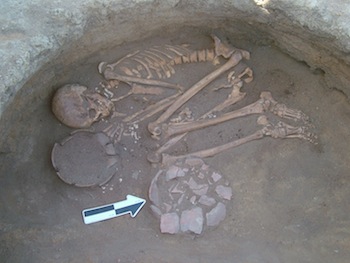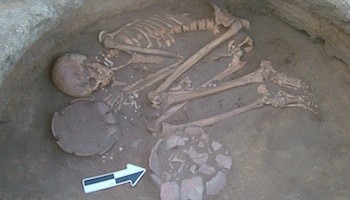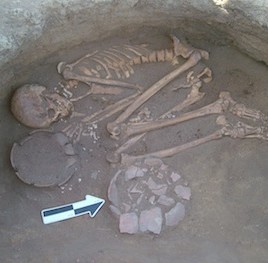
The grave of a young male at the multi-preiod burial site in Al Khiday, Sudan. By analysing dental plaque from the teeth of these skeletons, researchers have gained insight into ancient human diets. Photo credit: Donatella Usai/Centro Studi Sudanesi and Sub-Sahariani (CSSeS).
Dental plaque from ancient human burial sites in Sudan has provided clues as to what humans ate nearly 10,000 years ago. Chemical analysis of the plaque found specific substances – called terpenoids – that are unique to a plant called purple nut sedge.
While considered a weed today, the analysis indicates it was an important source of carbohydrates and that these pre-agricultural people were well versed in the uses of plants in their area.
The analysis also showed evidence for the use of fire or smoke to cook or preserve food.
Original research paper published in the journal PLoS ONE on July 16, 2014.
Names and affiliations of selected authors

